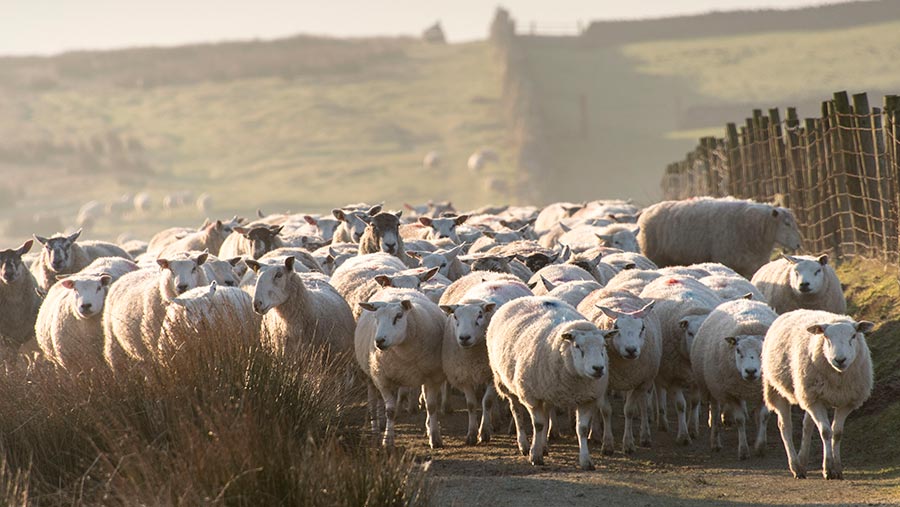Farmers urged to plan parasite control now for grazing season
 © FLPA/REX/Shutterstock
© FLPA/REX/Shutterstock Sheep and cattle farmers are being reminded that January is the ideal time to plan and review the farm’s parasite control strategy ahead of the coming grazing season.
Such preparation can help develop a plan to cut disease, costs and selection for anthelmintic resistance, according to the National Animal Disease Information Service (NADIS).
By working with vets or SQPs (Suitably Qualified Persons), farms can follow seven steps to produce parasite control planners and visualise tasks for the coming year.
See also: Q&A: Complete guide to controlling worms in your herd
- Seasonal risk and farm history: Different parasites and conditions cause problems at different times of the year. Consider what issues the farm has encountered in the past.
- Identify at-risk animals: Younger animals are generally more susceptible to disease, particularly calves and lambs in the first and potentially second grazing seasons. Adult cattle may also be at risk when brought on to farms with a history of lungworm.
- Anthelmintic choice and rotation: Familiarise yourself with products and their active ingredients. Appropriate choice of wormers and product rotation will help reduce selection for anthelmintic resistance on your farm.
- Biosecurity and quarantine treatments: Appropriate control measures surrounding holding and quarantine treatment of bought-in stock before turnout will help prevent anthelmintic resistance introduction on your farm.
- Diagnostic and performance testing: Worm egg counts can influence treatment and pasture management options. Performance testing can help you target worm control at the animals worst affected by parasitic burden. Diagnostics can improve the timing of treatments and cut costs and productivity losses.
- Identify “safe” and “contaminated” grazing: Planning of pasture management and rotation should be done in conjunction with diagnostic testing and treatment regimens to help reduce exposure, infectious burden and disease in at-risk groups of animals, and selection for anthelmintic resistance.
Contaminated pastures are those grazed previously by infected animals, including pastures grazed the previous season in some instances.
Safe pastures are those which have not been grazed previously, such as freshly seeded leys, and silage and hay aftermaths as they become available later in the season.
Pastures previously grazed by sheep are generally safe for cattle and vice versa with respect to roundworms, although it is important to note this is not necessarily the case with liver fluke.
- Other jobs: Incorporate parasite control into spring turnout, shearing, winter housing etc to help with implementation.
